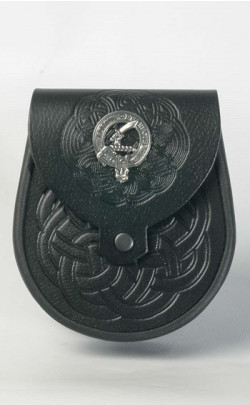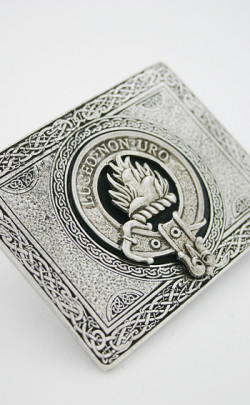
Clan Cochrane
VIRTUTE ET LABORE
Scottish History
of Clan Cochrane
In the beginning
There are several theories surrounding the origin of the Cochrane clan. The popular belief, and one supported by many clansmen is that they began life in an area called Coueran or Coveran, which was in modern-day county of Renfrewshire, near the bustling town of Paisley. Coveran, which was a Norman name, eventually evolved into Cochrane. The very first Coveran is said to be a Norse warrior who arrived in Scotland in the ninth century with his countrymen to pillage and plunder the west coast – but decided to settle there.
Another possibility is that the name comes from the Gaelic words for “brave fellow”. Legend has it that a family member who proved particularly brave and ferocious in battle was described by his commander as ‘coch ran’ which translates to brave fellow. Similarly coch ran could also relate to the words ‘battle cry’ or ‘the roar of battle’.
By the thirteenth century the family, still known as Coveran, was undoubtedly one of the more prominent in the region. In 1262 Waldenus de Coveran was a witness to a document which confirmed the transfer of land from Dughall MacSuibhne (MacSween) to Walter Stewart, the Earl of Menteith. The land in question included Skipness Castle on the east side of the Kintyre Peninsula near the village of Skipness, Killislate and the parish of Kilcalmonell. The Earl then granted the church of Kilcalmonell to the monks of Paisley. Walter Stewart was the third son of the Lord High Steward of Scotland, who was the personal representative of the King of Scotland and, as such one of the most powerful men in the land. So Waldenus de Coveran was mixing in exalted company indeed.
Further proof of the family’s VIP status came a few years later. By 1297 the family name had changed to Cochran and Baron William de Cochran was a signatory on King Edward’s Ragman Rolls. This was the name given to a collection of agreements, laid out on four rolls of parchment, which King Edward the first of England imposed on Scottish nobility and land-owners in return for deciding who should be the next king of Scotland.
The family continued to prosper, but there came a time when it almost died out. In common with most Scots they simplified their Norman name and became simply Cochran.
In 1576 William Cochrane of that Ilk was granted a charter by Queen Mary confirming his ownership of the lands of Cochran. He and his wife Margaret had only one child, a daughter, Elizabeth. In 1593, he named her as the sole heir of his estate. However he stipulated that her eventual husband would assume the name Cochrane. This duly came to pass when she married Alexander Blair, from Ayrshire.
Mr and Mrs Cochrane had seven sons and three daughters. The eldest son, Sir John Cochrane, was a colonel in the army of Charles the First. He was sent to solicit the assistance of foreign princes, and later by Charles the Second to run his embassy in Poland. He died, with no heirs.
The estate passed to his brother, Sir William Cochrane of Cowdon, who in 1647 became Lord Cochrane of Ochiltree. In May 1669 he was elevated again and became the Earl of Dundonald, firmly establishing the Cochranes at the top end of Scotland’s nobility.
The architect and the admiral
Over the centuries the Cochranes have provided a large number of colourful characters, who left their mark on history.
And none more so than Robert Cochrane and Admiral Thomas Cochrane.
Robert was born in Scotland and educated in Italy and rose to become one of fifteenth century Scotland’s most eminent architects. He was employed by James the Third to design and erect several royal buildings and such were his skills and personality that he soon became a firm favourite of the king. King James was unusual because he decided against surrounding himself with the nobility. Instead he preferred the likes of architects, tradesmen and musicians as his closest companions. Before long Robert Cochrane was the king’s closest and most trusted advisor. King James even bestowed upon Cochrane the Earldom of Mar, a title that had previously belonged to the monarch’s brother, John Boyd, who had been executed by James for trying to usurp his crown.
He became so powerful that any communication to the king had to be seen by him first. It was a position which opened him up to all sorts of bribes and it’s understood he helped himself to a great many. He soon became wealthy beyond his wildest dreams, while the king turned a blind eye.
Cochrane felt he was untouchable and soon began to extend his power even further. One day he decided that the silver coin of the realm should be mixed with brass and lead. This reduced the currency’s value, but Cochrane produced a proclamation instructing the populace that this new coin was equal in value to the old silver coin. This resulted in near anarchy when farmers refused to sell their produce for the new money. There was increasing pressure on Cochrane to return the currency to the old silver standard but he refused, saying, “The day I am hanged they may be called in; not sooner”. It was meant to be a joke but those words came back to haunt him.
In July 1484 Scotland’s nobility held a secret meeting to agree a way of ridding the country of the king’s favourites. Cochrane heard about the get-together at the church in Lauder and in his arrogant manner marched up to the front door and insisted on being allowed in. He was accompanied by a guard of three hundred armed men, all dressed in his livery of white with black facings. Cochrane sported a black velvet riding suit with a gold chain round his neck and a golden bugle horn hanging from his side.
Sir Robert Douglas, of Lochleven, who was guarding the door, heard the knocking, demanded who was there. Cocbrane answered, “The Earl of Mar”, and was allowed to enter.
As soon as he was inside he was attacked by a couple of Lords, one who grabbed the gold chain and pulled it off his neck and another who ripped off his bugle horn.
Cochrane was stunned by this behaviour and asked his assailants if they were jesting. But their Lordships were not kidding and furthermore warned Cochrane that he had been abusing his power for far too long and was now about to be punished.
At that point a deputation from the church went to the nearby camp of King James and snatched away his other cronies, whom they despised. They then condemned them to death for deliberately giving the king bad advice to the detriment of the whole country. Cochrane and his companions were then frog-marched to a nearby bridge and hanged.
Family History Mini Book
We hope you enjoyed reading this excerpt from this mini book on the Scottish history of the Cochrane family.
You can buy the full book for only108 Clan Cochrane
Tartan Products
The Crests
of Clan Cochrane




































































